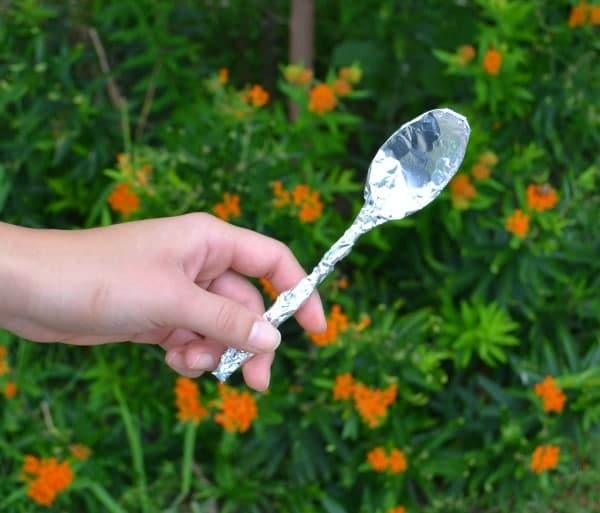Using tinfoil (aluminum foil) in the dishwasher to clean cutlery is not a recommended or effective method. In fact, it can potentially cause harm to your dishwasher and cutlery.
Aluminum foil does not have the cleaning properties or detergents necessary to effectively remove food residues and stains from cutlery. Dishwashers are designed to work with specific detergents that contain enzymes and other cleaning agents to break down and remove food particles. Aluminum foil, on the other hand, lacks these cleaning properties.
Moreover, placing aluminum foil in a dishwasher can have adverse effects. The foil may tear, break apart, or become stuck in the dishwasher’s pump or drain, leading to malfunctions. Additionally, the interaction between aluminum and certain dishwasher detergents can cause a chemical reaction that leaves behind a residue on your cutlery.
Where people get confused and think this might work is because of how tinfoil is used in cleaning SILVERWARE not regular steel cutlery. But…
Using aluminum foil to clean silver is a popular and effective method, often referred to as a simple chemical reaction called ion exchange. Here’s a step-by-step guide:
How to use tinfoil to clean silver:
Materials Needed:
Aluminum Foil: Cut a piece of aluminum foil large enough to cover the bottom of a basin or bowl.
Hot Water: You’ll need enough hot water to submerge the silver items you want to clean.
Baking Soda: Add a couple of tablespoons of baking soda to the water.
Steps:
Line the Basin: Place the aluminum foil at the bottom of a basin or bowl, making sure it covers the entire surface.
Add Hot Water: Fill the basin with hot water. You want the water to be hot but not boiling.
Add Baking Soda: Sprinkle baking soda into the hot water. Stir the water to dissolve the baking soda. Baking soda enhances the cleaning process by facilitating the ion exchange between the aluminum and silver.
Submerge Silver Items: Place the silver items into the basin, ensuring that they come into direct contact with the aluminum foil.
Wait for Reaction: Let the silver items sit in the solution for a few minutes, allowing the chemical reaction to take place. You may observe bubbling as the tarnish transfers from the silver to the aluminum.
Rinse and Dry: After a few minutes, remove the silver items, rinse them thoroughly with clean water, and dry them with a soft cloth.
The reaction between the aluminum foil, baking soda, and hot water helps remove tarnish from the silver. The tarnish, which is essentially silver sulfide, transfers from the silver to the aluminum through a redox reaction, leaving the silver clean and shiny. This method is suitable for removing tarnish but may not be ideal for cleaning heavily engraved or intricate pieces, as it might not reach all the crevices.
For optimal results, it’s best to use a dishwasher detergent specifically designed for dishwashers and follow the manufacturer’s guidelines for loading cutlery and other items. If you’re experiencing issues with your dishwasher or cutlery not being cleaned properly, it’s recommended to check the dishwasher settings, use the right detergents, and ensure that you’re loading the items properly for efficient cleaning.

